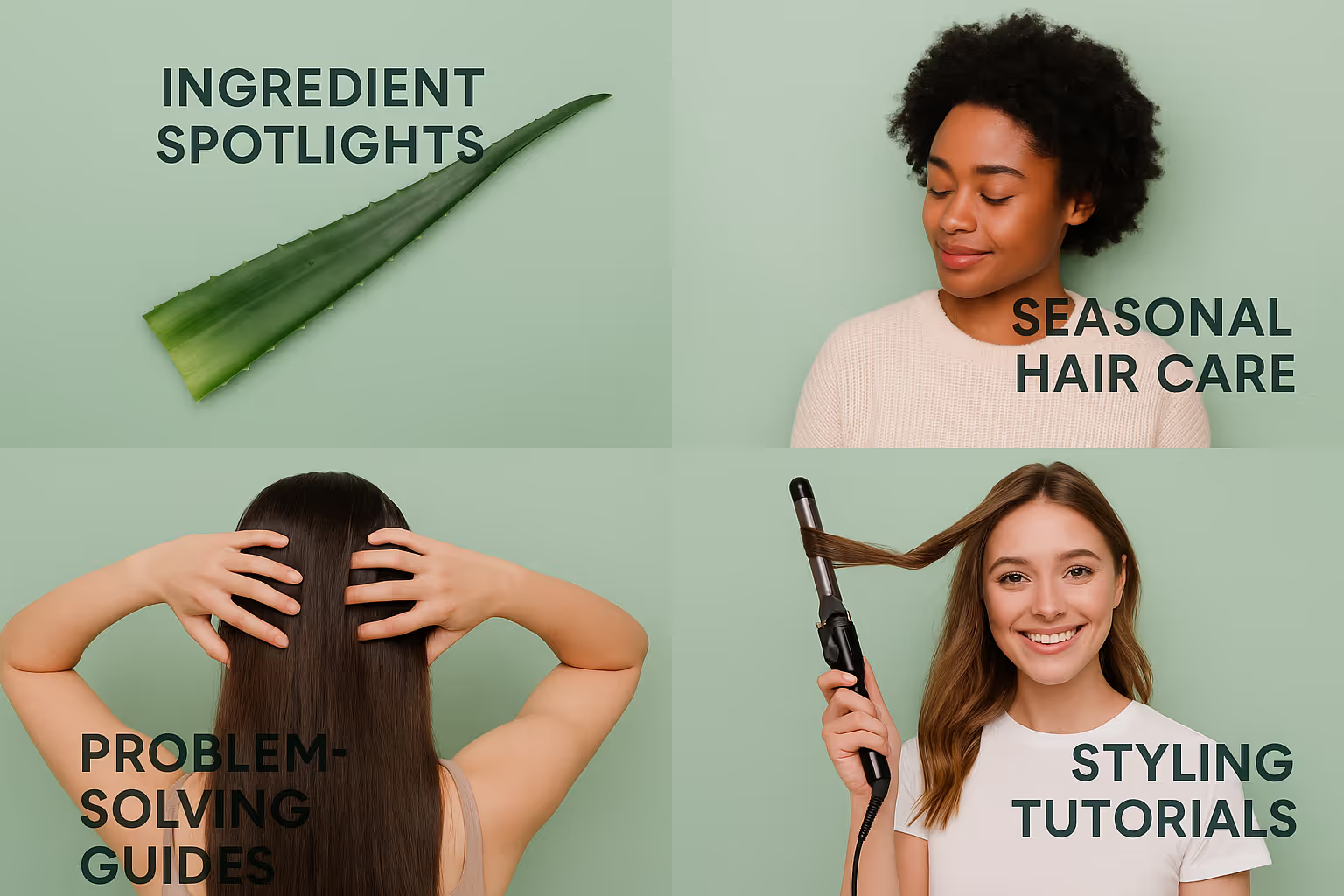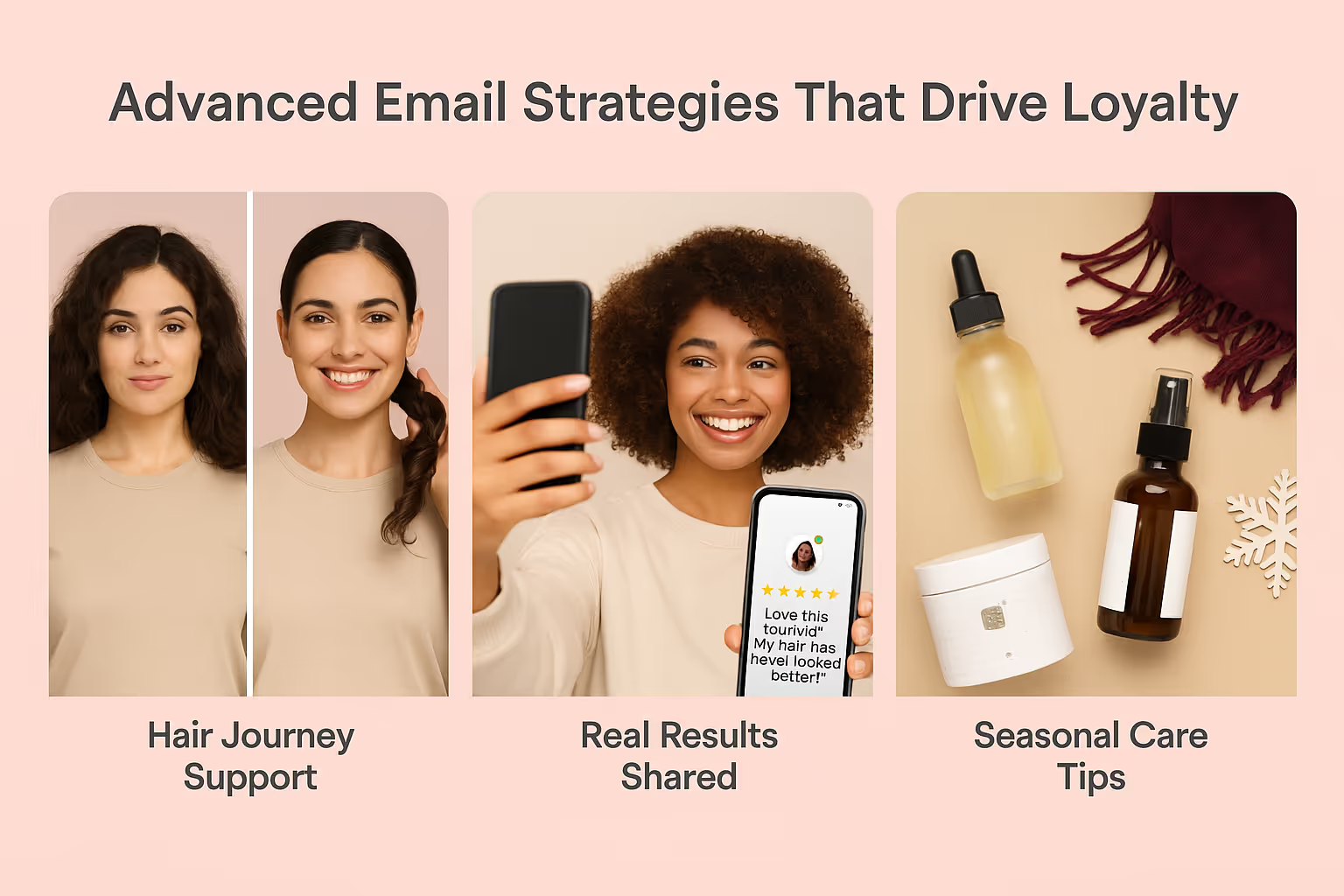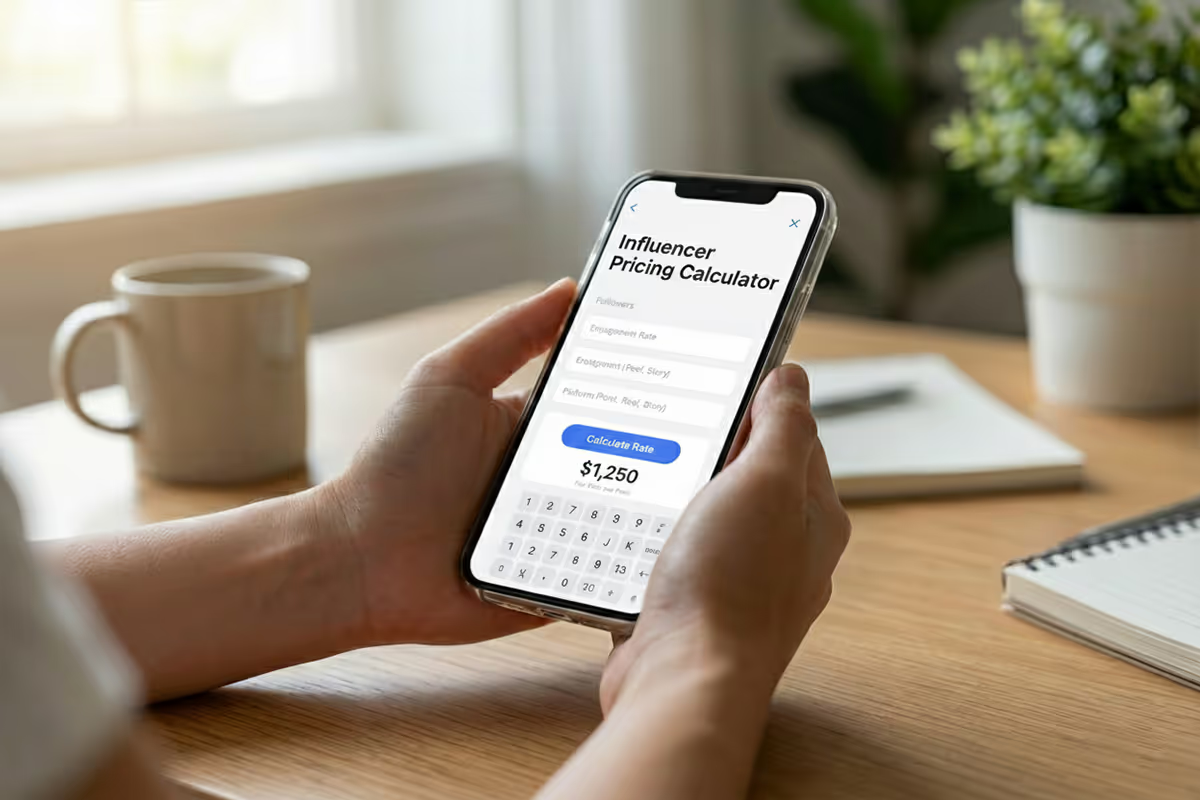What Email Marketing Strategies Work Best for Hair Care? Best Approaches

The global hair care industry brings in over $87 billion each year, yet many brands fall short when it comes to customer retention.
Knowing what email marketing strategies work best for a hair care brand can help bridge that gap, turning one-time buyers into loyal fans who repurchase regularly and engage with your product launches.
Hair care marketing isn’t one-size-fits-all. With choices shaped by personal concerns like frizz, thinning, or scalp health, email campaigns need to deliver personalized content that feels more like expert guidance than a sales pitch. For brands ready to scale, mastering email is key to sustainable growth.
The Most Effective Email Marketing Approaches for Hair Care Brands
Not all hair care shoppers are the same, and if your emails treat them like they are, you’ll miss repeat revenue. This blueprint helps you match every message to hair type, concern, and intent, so emails feel more like expert advice than marketing.
Segment Based on Hair Type and Concerns
Hair care customers don't want generic product recommendations, they want solutions tailored to their specific needs.
Smart segmentation starts during the initial sign-up process by asking subscribers about their hair type (fine, thick, curly, straight), primary concerns (damage, dryness, frizz, color protection), and current routine complexity.
Key segmentation categories that drive results:
- Hair texture and type: Fine vs. thick, straight vs. curly, chemically treated vs. natural
- Primary concerns: Damage repair, moisture retention, color protection, scalp health
- Routine complexity: Minimalists who want simple solutions vs. enthusiasts who love multi-step regimens
- Purchase behavior: Premium buyers vs. budget-conscious shoppers, frequent vs. occasional purchasers
Build Educational Content Around Hair Health
Hair care customers actively seek knowledge about ingredients, techniques, and problem-solving. Educational email campaigns position brands as trusted advisors rather than pushy salespeople.
Create weekly or bi-weekly newsletters that teach subscribers about hair science, ingredient benefits, and application methods.
Seasonal content performs exceptionally well in this space. Summer emails focus on heat protection and humidity control, while winter content addresses static and dryness. The holiday party season brings opportunities to share styling tutorials and long-lasting hold products.

Effective educational email topics include:
- Ingredient spotlights: Deep dives into sulfates, silicones, proteins, and natural oils
- Seasonal hair care: Adjusting routines for humidity, cold weather, or sun exposure
- Problem-solving guides: Step-by-step solutions for common issues like breakage or buildup
- Styling tutorials: Video-based content showing techniques for different hair types
Implement Replenishment Automation
Hair care products have predictable usage cycles, making them ideal for automated replenishment campaigns. Shampoo typically lasts 6–8 weeks, conditioner 8–10 weeks, and treatments 3–4 months, depending on usage frequency and hair length.
Smart replenishment emails also suggest complementary products to increase basket size and enhance customer satisfaction.
Key elements of effective replenishment automation:
- Timing reminders: Send reorder prompts based on typical product usage cycles to stay top of mind without feeling pushy.
- Convenience focus: Highlight easy reorder options, such as one-click purchases or subscription plans with discounts.
- Usage tips: Provide helpful advice for getting the most out of current products, building trust, and engagement.
- Cross-sell recommendations: Suggest complementary items, e.g., pairing dry shampoo with texturizing spray or color-safe shampoo with a color-protecting mask.
Advanced Strategies That Drive Results

Beyond basic email tactics, sophisticated hair care brands leverage psychological triggers and customer behavior patterns to create deeper engagement and loyalty.
Create Hair Journey Email Series
Design comprehensive email journeys that guide customers through hair transformations. These multi-email sequences work particularly well for customers dealing with damage recovery, transitioning to natural hair, or growing out color.
A damage repair journey might span 12 weeks, with weekly emails covering different aspects of restoration: gentle cleansing techniques, deep conditioning schedules, protective styling methods, and progress tracking. Each email provides value while introducing relevant products at appropriate stages.
Journey emails create emotional investment in the process and brand. Customers feel supported throughout their hair transformation, leading to higher lifetime value and stronger brand loyalty.
Leverage User-Generated Content in Campaigns
Hair transformations are inherently visual and shareable. Incorporate customer photos, reviews, and styling videos into email campaigns to provide social proof and inspiration.
Before-and-after transformation photos perform particularly well, especially when accompanied by the customer's story and product routine.
Create monthly "customer spotlight" emails featuring real results from different hair types and concerns. This content feels authentic and helps subscribers visualize potential results with their hair.
User-generated content emails also encourage more customers to share their experiences, creating a positive feedback loop of social proof and community building.
Develop Seasonal Hair Care Campaigns
Hair care needs change dramatically with seasons and climate conditions. Develop comprehensive seasonal campaigns that address these shifting needs while introducing appropriate products.
Seasonal campaigns should launch 2-3 weeks before weather changes to help customers prepare rather than react to hair problems.
Seasonal email campaign focus areas:
- Spring renewal: Scalp detox, growth treatments, lightweight moisturizers
- Summer protection: UV shields, anti-humidity products, chlorine damage prevention
- Fall preparation: Deep conditioning, repair treatments, transition to heavier products
- Winter maintenance: Static control, intensive moisture, indoor heating protection
Product-Specific Email Tactics
Different hair care products require distinct email approaches because customer education needs and purchase motivations vary significantly across categories.
Treatment Product Education
Hair treatments like masks, serums, and oils require more education than basic shampoos and conditioners. Create detailed email series explaining proper application techniques, frequency recommendations, and expected results timelines.
Treatment emails should manage expectations realistically. A protein treatment won't repair years of damage overnight, but consistent use over 6-8 weeks can significantly improve hair strength and appearance. Honest communication builds trust and reduces customer disappointment.
Include video tutorials when possible, as visual demonstration makes complex application processes clearer than written instructions alone.
Color Care Specialization
Color-treated hair represents a significant subset of hair care customers with specific needs and higher product spending. Develop specialized email campaigns focusing on color longevity, vibrancy maintenance, and damage prevention.
Color care emails should address both at-home maintenance and salon visit timing. Help customers understand when to use clarifying treatments, how often to apply color-protecting masks, and signs that indicate professional touch-ups are needed.
This specialization works well for brands offering comprehensive color care lines or those partnering with salons for cross-promotional opportunities.
Styling Product Integration
Many hair care brands expand into styling products but struggle to integrate them into existing email strategies. Create emails that show complete routines from cleansing through final styling, demonstrating how products work together.
Styling integration emails work particularly well for customers who already purchase multiple products from the brand. They're ready to invest in their hair routine and appreciate comprehensive solutions.
Measuring Success and Optimization
Hair care email marketing requires tracking metrics that reflect the unique customer journey and product usage patterns.
Track Hair Care-Specific Metrics
Standard email metrics don't tell the complete story for hair care brands. Track product-specific open rates to understand which hair concerns generate the most engagement. Monitor click-through rates on educational content versus promotional emails to optimize content mix.
Replenishment email performance provides insight into customer satisfaction and product efficacy. Low repurchase rates might indicate product issues or unrealistic customer expectations that need addressing.
Key hair care email metrics to monitor:
- Segmented open rates: Compare performance across different hair types and concerns
- Educational vs. promotional CTR: Find the optimal content balance for your audience
- Replenishment email conversion: Track which products generate loyal repeat customers
- Seasonal campaign engagement: Identify which seasonal needs resonate most strongly
A/B Testing for Hair Care Content
Test subject lines that emphasize benefits versus ingredients. Some customers respond better to "Repair Damaged Hair Fast," while others prefer "Keratin and Protein Treatment Inside."
Test educational versus promotional content ratios to find the optimal balance for different customer segments.
Image testing is particularly important for hair care brands. Before-and-after photos, ingredient close-ups, and lifestyle images appeal to different customer motivations and should be tested systematically.
Insider's Tip: The Hair Diary Strategy
Here's an insider strategy that most hair care brands overlook: encourage customers to keep "hair diaries" through email prompts. Send weekly emails asking subscribers to track their hair's condition, product usage, and styling success. This creates engagement while gathering valuable customer data.
After 4-6 weeks, send personalized product recommendations based on their diary entries. This approach transforms routine email marketing into a consultative relationship that drives both loyalty and sales.
Customers feel heard and understood, while brands gain deep insights into product performance and customer needs.
The hair diary strategy works because it taps into the personal nature of hair care while providing tangible value to customers seeking better results.
Taking Your Hair Care Email Marketing to the Next Level
Successful hair care email marketing turns one-time buyers into loyal customers through education, personalization, and genuine care. The best campaigns feel like advice from a trusted friend, not just another sales pitch.
Segment by hair type and concerns, share expert tips, and use automated replenishment reminders for convenience. Highlight real customer transformations to inspire trust and connection.
Great hair care brands know they’re not just selling products, they’re supporting a journey. Start small, track what works, and grow from there. Your customers and your revenue will thank you.
FAQ
Related blogs

Influencer Pricing Calculator: Find Your Fair Rate for Posts, Reels & Stories
.avif)
How To Market Pet Products Through Storytelling: Win Attention, Build Trust, and Boost Sales Naturally
.avif)
How To Market Coffee To Gen Z: The High-Impact Blueprint Every Brand Needs
.avif)

